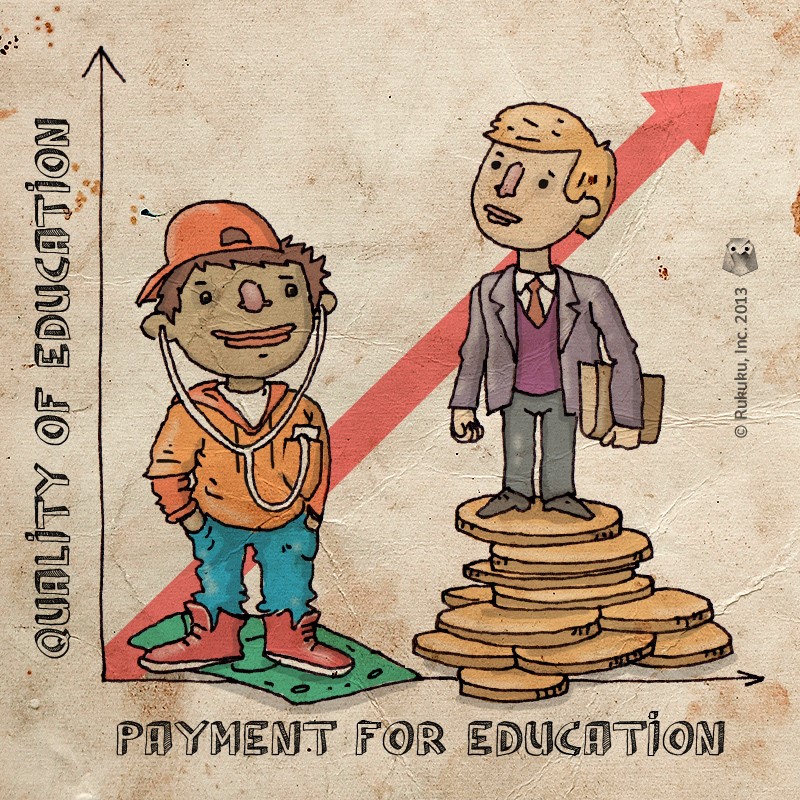Michael Horn is co-founder of the Clayton Christensen Institute and serves as the executive director of its education program. In 2008, he co-authored the award-winning book, Disrupting Class: How Innovation Will Change the Way the World Learns.

Michael Horn is co-founder of the Clayton Christensen Institute and serves as the executive director of its education program.
Q: You’ve said many times that the current online learning structures, especially Massive Open Online Classes (MOOCs), don’t have quite what it takes to disrupt traditional education. Why not? What’s lacking?
R: A couple of things are missing so far from the innovations that we have been seeing in the higher education space to make them truly disruptive. One of them is finding a real business model that allows sustainable growth and activity in the space instead of simply putting something out for free and hoping that a business model will eventually come together.
The second thing we’re seeing is that for these disruptions to ultimately be successful they have to solve a really important job to be done in the lives of employers or students or someone along the chain that is involved in education. A lot of them haven’t focused on solving that important job, one that’s really pressing. My sense is that those that are moving toward working with employers are starting to understand this better than others right now.
Q: Student assessment is one of the big challenges with MOOCs and digital learning in general. How do you see this issue being addressed, currently and in the future?
R: I think a couple of things could happen. First, to the extent that entities are partnering directly with the institutions themselves, they can together build specifications that, if the student passes and shows mastery, then employers will say, ‘yes, that looks like student success.’ That’s one way that might get solved. Second, I think you will simultaneously see independent assessments or consortia pop up whose purpose is to verify learning in an independent and objective way to help further competency-based learning. That’s the second thing that we will see coming out more and more.
Q: The college accreditation system is an obstacle for many online learning companies. Do you see that system evolving and/or a new system emerging?
R: In the short term, the college accreditation system is a barrier for a lot of this. The system is trying to evolve, but more likely we are going to see a new entity go around that accreditation system. That system was built for what it does today and it was quite successful in many ways in solving the set of problems that it did. But it’s antiquated for many of the problems we are talking about now, and the lessons from disruptions are pretty clear. It will be difficult to transform it into something that we want to solve these new, modern problems.
Q: How important is government policy in this process of disrupting education?
R: Disruption will happen regardless of what policy does or doesn’t do, but whether that disruption is positive or not, whether it really transforms the factory model of education into a student-centered one, that’s the huge question. Policy will shape and dictate that, to some degree, because policy incentivizes what sorts of programs are put in place, whether they in fact focus on student learning outcomes, and what the student learning outcomes that we care about are. Historically policies have been very focused on input-based ways of thinking about that, and accordingly we have very input-driven programs as opposed to ones that really prioritize learning outcomes.
In the higher education space, it will have a lot to do with how fast this disruption takes place. Policy could slow it down or could speed it up and make it focused on quality, if the right incentives are put in place.
Q: Do you see any signs of progress?
R: The Department of Education is starting to create waivers for competency-based learning programs that almost run around the accreditation organizations that are in place. Also, the dialogue has improved quite a bit around the potential of online learning. I think those are positive signs.
On the negative side, we have a fractured way of looking at the for-profit universities that have come before this wave, the innovation of the space over the past 20 years. The dialogue has broken down into for-profit equals good or bad, rather than a more nuanced look at the way the government’s policies actually incentivized poor behavior from some of these for-profits. Looking at the good behavior that they actually did do, I think the question ought to be not good or bad, but how do we take the innovation that happened there and is now happening elsewhere and marshal it toward a higher good and not repeat mistakes, rather than create a polarized debate.
Q: In the past, you’ve mentioned overseas markets as areas where large, open classes can really have impact. What do education companies need to go to properly realize that potential?
R: I think MOOCs can be helpful for emerging markets where there is lots of non-consumption, where lots of people need college education, where a liberal arts education is still in demand. MOOCs can help from the content point of view. The dangers are companies just assuming that the US-based courses will naturally be the things that help in those contexts, rather than really embedding themselves or working with partners who deeply understand those contexts to create things that are relevant and useful for those people. It’s going to be really important and challenging for folks in the US to create platforms that solve those problems in those contexts. There is huge opportunity but it will be very difficult as well.
In the second part of this interview, to be posted tomorrow, Michael looks more closely at how technology is influencing education at all levels, from primary school to corporate training. Stay Tuned!





